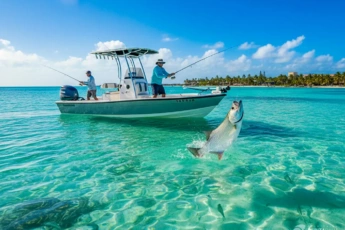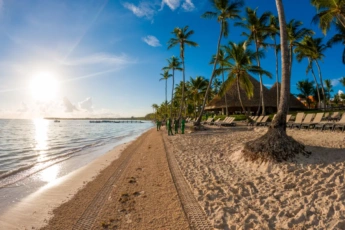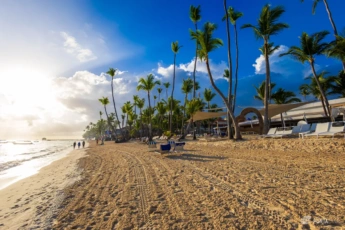Explore Animals in the Dominican Republic - Wildlife, Myths & Facts 2025
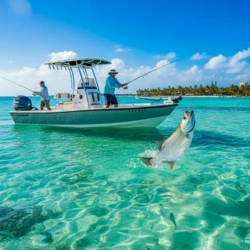
Punta Cana Fishing 2025 – Complete Guide to Species, Seasons, Costs, and Local Tips
Fishing is extremely popular in Punta Cana, thanks to its unique geographic location and rich marine environment, which create ideal conditions for sport and recreational fishing. A standout moment came in 2013, when Billfish Report called Punta Cana’s blue…
Read more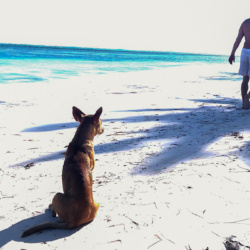
Best Pet-Friendly Oceanfront Apartments for Rent in Punta Cana – Important Tips & List of Veterinary Services
Finding pet-friendly apartments for rent in Punta Cana can be a real headache. Many landlords hesitate to allow pets due to concerns about property damage, noise complaints, and allergies. These worries often lead to strict pet policies, including breed…
Read more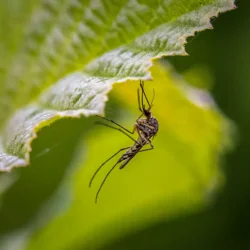
Mosquitoes in the Dominican Republic – Best repellents 2025, mosquito season, and how to avoid diseases
Should we beware of mosquitoes in the Dominican Republic, where and when they are more common, how to avoid the effects of mosquito bites, and what is the first aid for bites? We will describe in the article some…
Read more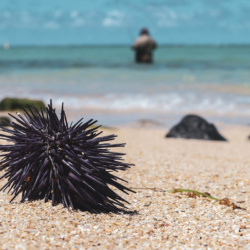
Are there any dangerous animals in the Dominican Republic in 2025?
You have decided to get away from the daily routine, gather your thoughts, swim in the ocean, soak up the sunshine, and choose the Dominican Republic for a vacation. It is a country with a tropical climate. Thereby you…
Read moreThe Dominican Republic is not just known for its stunning beaches and rich culture; it is also home to a wide variety of animals. From lush rainforests to coral reefs, the country's diverse habitats support an impressive range of creatures.
Whether you are an avid birdwatcher, a marine enthusiast, or simply love nature, the Dominican Republic offers something for everyone!
Native Mammals of the Dominican Republic
The Dominican Republic is home to a small yet fascinating group of native animals not found anywhere else. These unique species glimpse the island’s ancient biodiversity and underscore the importance of protecting its fragile ecosystems.
- Hispaniolan Solenodon. One of the oldest mammals on Earth, this nocturnal creature is native to Hispaniola and is known for its unique venomous bite.
- Hispaniolan Hutia is a rodent-like mammal that inhabits forests and caves. It is an integral part of the local ecosystem.
Both the solenodon and hutia are considered endangered, making conservation efforts vital for their survival.
Birds of the Dominican Republic
Birdwatchers flock to the Dominican Republic to see its stunning array of avian species, including:
- Hispaniolan Parrot. Known for its vibrant green feathers and red forehead, this parrot is a sight to behold.
- Palmchat. The national bird of the Dominican Republic, this small bird is social and builds unique communal nests.
- Ridgway's Hawk. An endangered bird of prey that can be spotted in Los Haitises National Park.
Reptiles and Amphibians of the DR
The Dominican Republic is home to a variety of other animals like reptiles and amphibians, including:
- American crocodile. Found in lagoons and saltwater lakes like Lake Enriquillo, these awe-inspiring creatures require caution when observed in the wild.
- Iguanas. The Rhinoceros Iguana and Ricord's Iguana are endemic species that thrive in arid and coastal areas.
Frogs such as the Hispaniolan tree frog, whose calls are often heard in forested areas, add to biodiversity.
Dominican Marine Life
The Dominican Republic boasts rich marine ecosystems, and popular sea animals include:
- Humpback whales. Each year, thousands of humpback whales migrate to the waters near Samaná Bay for mating and calving.
- Sea turtles. Several species, including the hawksbill and green turtle, nest on the country’s beaches.
- Coral reef species. The reefs are teeming with fish such as parrotfish, angelfish, and moray eels, making snorkeling and diving unforgettable experiences.
Top 3 National Parks and Wildlife Reserves
To protect its incredible biodiversity, the Dominican Republic has established numerous national parks and reserves:
1. Jaragua National Park
This UNESCO biosphere reserve is located in the southwestern part of the Dominican Republic. It encompasses an array of ecosystems, including dry forests, mangroves, and coastal lagoons.
The park is famous for its pristine beaches, like Bahía de las Águilas, and is an important nesting site for endangered sea turtles. Visitors can also explore caves with ancient Taino petroglyphs and enjoy birdwatching opportunities featuring endemic species.
2. Los Haitises National Park
Located in the northeast, Los Haitises is renowned for its dramatic limestone karsts, mangrove forests, and extensive cave systems adorned with pre-Columbian art. The park in the Dominican Republic serves as a critical habitat for many animals: endangered Ridgway's hawks, pelicans, and manatees. Visitors can take boat tours to explore the lush waterways and witness the unique flora and fauna of this tropical paradise.
3. Lake Enriquillo and Isla Cabritos
Situated in a rift valley below sea level, Lake Enriquillo is the largest saltwater lake in the Caribbean. It is a haven for wildlife enthusiasts, offering sightings of American crocodiles, flamingos, and iguanas.
Isla Cabritos, an island within the lake, serves as a sanctuary for these species. The area is also steeped in geological and historical significance, making it a fascinating destination for eco-tourists and nature lovers.
Endangered Species and Conservation Efforts
While the Dominican Republic is a treasure trove of biodiversity, many species face threats from habitat loss, climate change, and illegal hunting. Conservation organizations and local communities are working tirelessly to preserve this natural heritage through initiatives like:
- Marine protected areas to safeguard coral reefs and marine life.
- Breeding programs for endangered species like the Ridgway's hawk.
- Education campaigns to reduce human-wildlife conflict and promote eco-friendly tourism.
Responsible Wildlife Tourism in the Dominican Republic
Visitors can contribute to conservation efforts by practicing responsible tourism. Here are some tips:
- Choose eco-friendly tour operators who respect wildlife habitats.
- Avoid purchasing souvenirs made from animals in the Dominican Republic.
- Follow guidelines when visiting national parks to minimize your impact on the environment.
By embracing responsible wildlife tourism, tourists to the DR can help protect its extraordinary biodiversity for future generations. Small actions, such as choosing sustainable tours and respecting nature, can significantly preserve the habitats of the island’s unique species while ensuring that tourism remains a positive force for conservation.
Key takeaways
The Dominican Republic is a paradise for wildlife enthusiasts, offering opportunities to witness unique animals in their natural habitats. By supporting conservation efforts and practicing responsible tourism, we can ensure that future generations continue to enjoy this incredible biodiversity.
Frequently asked questions about
animals in the Dominican Republic
1. What type of animals live in the Dominican Republic?
The Dominican Republic is home to a variety of animals, from native species to those introduced over time. You can find a mix of mammals, birds, reptiles, amphibians, and marine creatures.
- Endemic species. The Hispaniolan Solenodon and the Hispaniolan Hutia are unique mammals that can only be found in Hispaniola (shared by the Dominican Republic and Haiti).
- Reptiles. Iguanas like the Rhinoceros Iguana thrive in dry, rocky areas.
- Birds. The Palmchat, the national bird, is a common sight in forests and gardens.
- Whales. Humpback whales migrate to the Samana Bay annually between January and March for breeding.
- Coral reefs. Snorkeling reveals vibrant coral ecosystems with fish like parrotfish and angelfish.
Animal type in the Dominican Republic
| Type | Examples | Habitats |
|---|---|---|
| Mammals | Hutia, Solenodon | Forests, caves |
| Reptiles | Rhinoceros Iguana, Gecko | Drylands, rocky areas |
| Birds | Palmchat, Hispaniolan Parrot | Forests, urban gardens |
| Marine creatures | Humpback whale, Parrotfish | Oceans, reefs |
2. Are there monkeys in the Dominican Republic?
Yes, the Dominican Republic has monkeys, though they are not native. The most notable species is the Capuchin monkey, which can be found in controlled environments like zoos or wildlife parks.
- At Monkeyland in Punta Cana, families can interact with these playful creatures in a safe, eco-friendly environment.
Capuchin monkeys are popular for their intelligence and social nature. Visitors can feed them, learn about their behavior, and take part in educational tours.
3. Are there cats in the Dominican Republic?
Yes, both domestic and feral cats live in the Dominican Republic.
- Domestic cats. Pet cats are common in urban areas and vacation rentals. If staying in pet-friendly accommodations, you can often bring your own cat.
- Feral cats. Stray cats are prevalent, especially near restaurants or resorts where they may seek food.
If you’re traveling with a pet, Punta Cana offers services such as veterinary clinics and grooming centers.
4. What is special in the Dominican Republic?
The Dominican Republic is a unique blend of natural beauty, rich history, and vibrant culture.
- Punta Cana’s white sand beaches are perfect for families, with calm waters for children to enjoy.
- Merengue music and dance, as well as local festivals, are integral to Dominican life.
- From ziplining in the jungle to snorkeling along coral reefs, there’s something for everyone.
For instance, the Indigenous Eyes Ecological Reserve is a family-friendly location where you can explore freshwater lagoons, guided tours, and nature trails.
5. Does the Dominican Republic have a national animal?
Yes, the national animal of the Dominican Republic is the Palmchat (Dulus dominicus), a small songbird unique to the island of Hispaniola. Some facts about the Palmchat include:
- Appearance is brownish-green with streaked plumage.
- Habitat is in palm trees and gardens across the country.
- Behavior has cheerful calls and communal nests.
The Palmchat symbolizes the country’s natural heritage and can often be spotted in urban and rural settings alike.
6. Are there pigs in the Dominican Republic?
Yes, pigs are found in the Dominican Republic, both domesticated and wild. Types of pigs:
- Domesticated pigs are commonly raised in rural areas for farming and food production.
- Wild pigs and feral pigs inhabit forests and remote areas in some regions.
On Saona Island, a popular tourist spot near Punta Cana, visitors can interact with swimming pigs, a family-friendly attraction where these animals swim in shallow waters along the beach.
7. Are there parrots in the Dominican Republic?
Yes, the Dominican Republic is home to several parrot species, most notably the Hispaniolan Amazon Parrot (Amazona ventralis). Characteristics of the Hispaniolan Amazon Parrot
- It has green plumage with hints of red and blue on its wings.
- It is forested areas and protected reserves like Los Haitises National Park.
- It is endangered due to habitat loss and illegal pet trade.
Families visiting eco-parks or reserves can see these parrots in their natural environment.
8. Do snakes live in the Dominican Republic?
Yes, the Dominican Republic has snakes, though they are generally harmless to humans.
- Hispaniolan Boa (Chilabothrus striatus) is the largest snake on the island, non-venomous and shy, often found in forests and caves.
- Garden snakes are smaller, non-threatening species commonly seen in rural areas.
Snakes play an essential role in the ecosystem by controlling rodent populations.
9. How many animal species are in the Dominican Republic?
The Dominican Republic is rich in biodiversity, with approximately:
- Mammals. 50+ species (including marine mammals).
- Birds. Over 300 species, with 32 endemics like the Palmchat.
- Reptiles and amphibians. Around 140 species, including iguanas and frogs.
- Marine life. Thousands of species, from coral reef fish to humpback whales.
10. What animal is the Dominican Republic known for?
The Dominican Republic is known for the Hispaniolan Solenodon (Solenodon paradoxus), a unique and ancient mammal. Key facts about the Hispaniolan Solenodon
- Found only on the island of Hispaniola.
- Small, shrew-like with a long snout and venomous bite.
- A “living fossil,” it dates back millions of years and provides insights into evolutionary history.
In addition to the Solenodon, the country is celebrated for its national bird, the Palmchat, and marine life like humpback whales.
11. What is the giant spider in the Dominican Republic?
The Hispaniolan Giant Tarantula (Phormictopus cancerides) is the largest spider in the Dominican Republic.
- Can reach up to 6 inches in leg span.
- Dark brown to black with hairy legs and body.
- Found in forests, caves, and sometimes near rural homes.
- While intimidating, they are not aggressive and only bite if provoked.
These tarantulas play an important ecological role by controlling insect populations.
12. Are there poisonous spiders in the Dominican Republic?
Yes, there are venomous spiders in the Dominican Republic, but most are not dangerous to humans. Key species:
- Black Widow Spider (Latrodectus mactans). Recognizable by its glossy black body and red hourglass marking. Its bite can cause severe pain but is rarely fatal if treated.
- Brown Recluse Spider (Loxosceles reclusa). Known for its violin-shaped marking on the back, its bite can lead to skin necrosis in rare cases.
Precautions:
- Wear gloves when handling outdoor objects or cleaning dark spaces.
- Shake out shoes or clothing left outdoors before use.
13. What is the Dominican Republic mythical creature?
The Dominican Republic has a rich folklore, with one of the most famous mythical creatures being the Ciguapa:
- A mysterious, seductive woman with backward-facing feet.
- Said to lure men into the forest and disappear, leaving no trace due to her unique footprints.
- The Ciguapa symbolizes nature’s mystery and has inspired numerous stories, songs, and artworks.
Visitors to rural areas may hear locals share tales about encounters with this enigmatic creature.
14. Was Jurassic Park filmed in the Dominican Republic?
Yes, parts of the 1993 movie Jurassic Park were filmed in the Dominican Republic. Locations used include:
- Amber Mine Scenes. Filmed in the amber mines near Puerto Plata, showcasing the Dominican Republic’s reputation for high-quality amber.
- Amber Museum. Though not a filming location, the Amber Museum in Puerto Plata features displays related to the movie and fossilized insects like the ones seen in the film.
The breathtaking natural beauty of the Dominican Republic added authenticity to the movie’s prehistoric theme.
15. Which Caribbean island has the most wildlife?
The title of “most wildlife-rich Caribbean island” depends on biodiversity metrics, but Hispaniola, which includes the Dominican Republic, is among the top contenders. Why Hispaniola?
- Over 30% of its species are unique to the island, including the Hispaniolan Solenodon and Hutia.
- Features mountains, rainforests, savannas, and coastal reefs, supporting diverse life.
- Protected areas such as national parks like Jaragua and Los Haitises are havens for wildlife.
Caribbean wildlife diversity
| Island | Known for | Unique wildlife |
|---|---|---|
| Dominican Republic | Endemic mammals, humpback whales | Solenodon, Rhinoceros Iguana |
| Trinidad & Tobago | Migratory birds, leatherback turtles | Scarlet Ibis |
| Cuba | Rare birds and reptiles | Cuban Crocodile, Bee Hummingbird |
| Jamaica | Rich bird species | Jamaican Tody, Swallowtail Butterfly |

